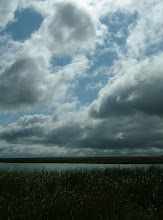
My dad the corn farmer and his brother who was also his business partner were constantly engaged in a battle against the evil of the blackbird. They spent great amounts of time thinking about plots to destroy or avert the creatures. They read all the current farm magazines and followed every lead when the topic was mentioned. They invested in numerous advertised methods and rejected more than a few for concerns of compassion and environment. Poisons were ruled out as hazards to farm cats and things that also harmed other forms of wildlife were not considered. But the men were creative and inventive, often welding this or that to a tractor or digger or planter to enhance its performance, and so they did a great deal of thinking and tinkering in their spare time to discover ways to exclude or divert or chase the flocks of blackbirds from their fields. The dominant working method for most of my later childhood and teen years was 'poppers'. These were devices resembling cannons that ran off propane gas. The supply tank, the size used by a modern day barbecue grill, was attached to the popper by a hose. The gas feeding into a chamber advanced a timing mechanism and when the chamber was full, a spark was triggered using a flint common to cigarette lighters, and a great boom was emitted from the business end of the device. A summer ritual when the corn was mature enough to be damaged by the black flocks was to get the poppers out of storage and fill the tanks and adjust the timing. When that task was the order of the day in the farm shop, it was more than annoying to be home for that afternoon of frequent yet random booming . When the terrible flocks began to arrive and assemble, the poppers were distributed around the fields. The lazy farmer set them out there and left them, and the birds eventually acclimated to the regular repetition of the sound and rendered them useless. But the smart farmer turned them off at dusk and turned them on again in the morning, a chore that was often delegated to the teen who could drive. The acquisition of vehicles that could reach the parts of the field without access roads became a side hobby and ATVs and small motorcycles were common accessories in this war.
But still, having a workable functioning adequate method such as the poppers was not enough. No. They kept reading, kept sending away for brochures and articles and reports of scientific studies, kept asking around, and of course, kept tinkering and inventing. One summer, the great "big idea" that was going to solve this all was weather balloons. The brothers were going to fill them once and tether them at the edges of the fields and suspend various moving and reflective and noisy devices from them until the right effect was achieved. I am sure that they relished the opportunity for continued tinkering and adjusting and trials that this method presented. Maybe they secretly envisioned this leading to their fifteen minutes of fame as their invention caught on and saved countless farmers time and money. I remember the excitement and anticipation of the big day that we were going to Aberdeen to go to the airport to go to the weather department to talk to the weather people to attempt to secure a number of said weather balloons. And I remember the somber and sad end to that day, the quiet ride home, the disappointment that descended on the formerly lively group when it was learned that . . . it wasn't going to work. The very malleability that allows the weather balloon to be filled and rise and be resilient to bumping and bouncing in the wind also renders it soft enough that it continues to expand due to the pressure of the air inside, until it gets larger and thinner and eventually pops. Meteorologists take advantage of this expansion to allow it to rise as it displaces greater amounts of the air around it to sample and transmit data on various characteristics of the atmosphere at various altitudes and they take advantage of the popping in hope that at least some of the falling mechanisms will be found and returned to them for the gathering of more detailed data and for reuse. So even if the men invested the great sums in the balloons and tethered them to their fields, within a few days time, they would expand to the point that they would become thinner and thinner and eventually, pop, and drop that investment into an inelegant pile of useless thin rubber. Bad investment, messy disposal problem. Another dead end in the neverending always challenging world of cornfield blackbird control.

No comments:
Post a Comment